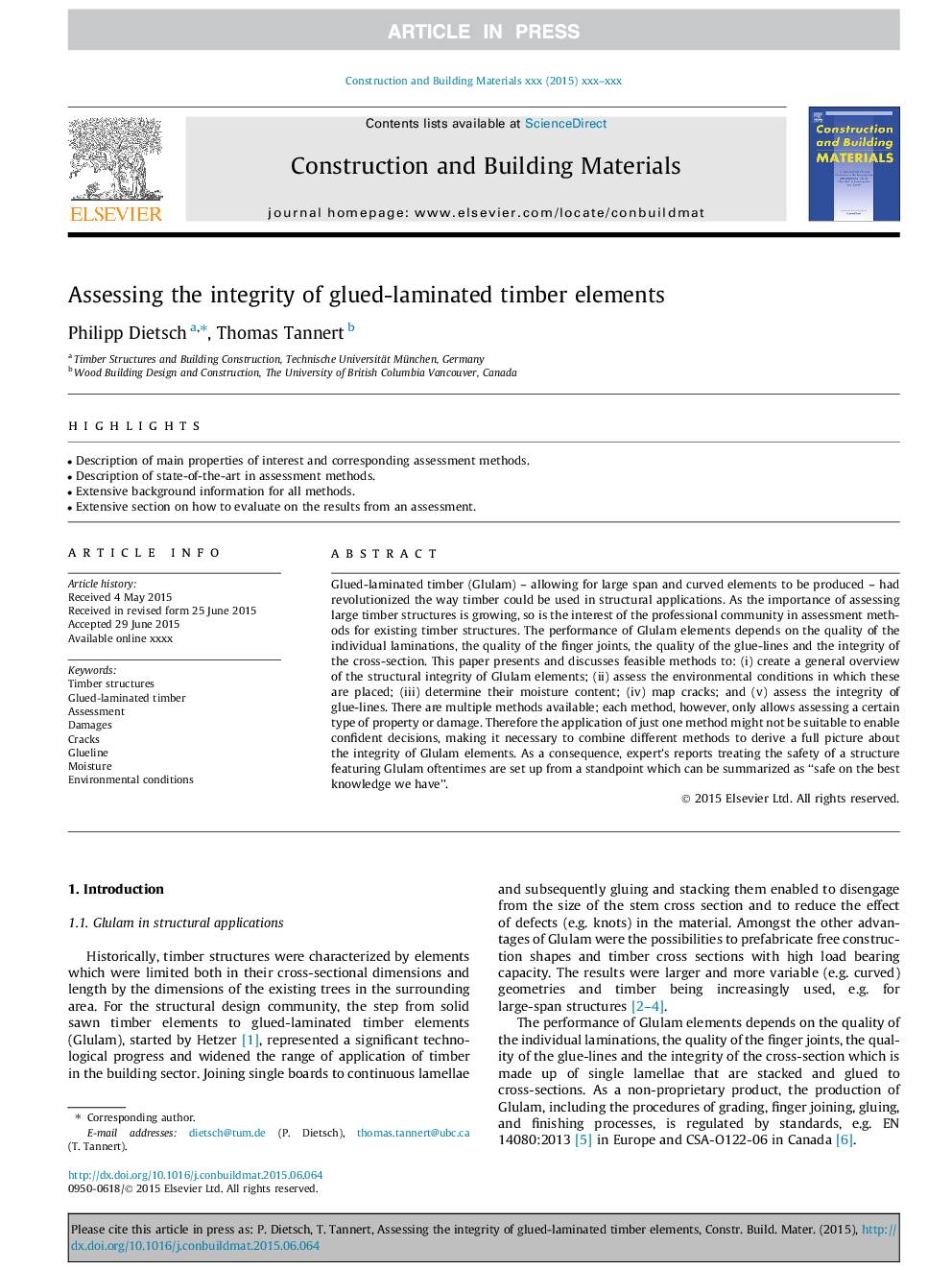| Article ID | Journal | Published Year | Pages | File Type |
|---|---|---|---|---|
| 10285143 | Construction and Building Materials | 2015 | 12 Pages |
Abstract
Glued-laminated timber (Glulam) - allowing for large span and curved elements to be produced - had revolutionized the way timber could be used in structural applications. As the importance of assessing large timber structures is growing, so is the interest of the professional community in assessment methods for existing timber structures. The performance of Glulam elements depends on the quality of the individual laminations, the quality of the finger joints, the quality of the glue-lines and the integrity of the cross-section. This paper presents and discusses feasible methods to: (i) create a general overview of the structural integrity of Glulam elements; (ii) assess the environmental conditions in which these are placed; (iii) determine their moisture content; (iv) map cracks; and (v) assess the integrity of glue-lines. There are multiple methods available; each method, however, only allows assessing a certain type of property or damage. Therefore the application of just one method might not be suitable to enable confident decisions, making it necessary to combine different methods to derive a full picture about the integrity of Glulam elements. As a consequence, expert's reports treating the safety of a structure featuring Glulam oftentimes are set up from a standpoint which can be summarized as “safe on the best knowledge we have”.
Related Topics
Physical Sciences and Engineering
Engineering
Civil and Structural Engineering
Authors
Philipp Dietsch, Thomas Tannert,
